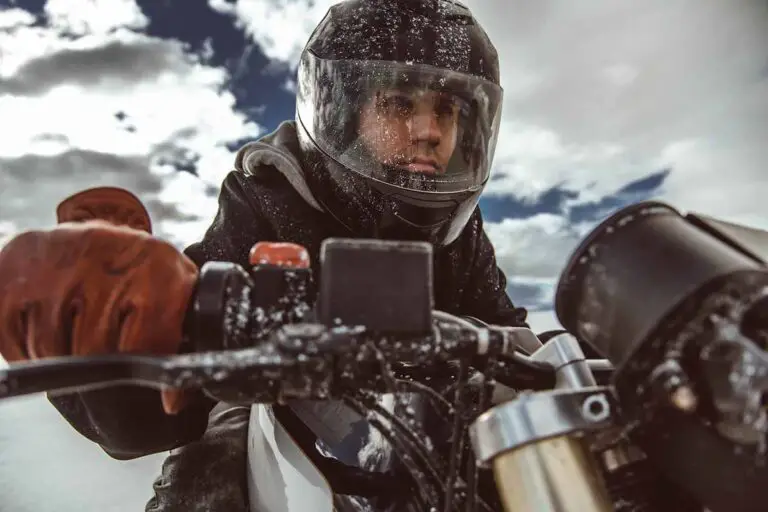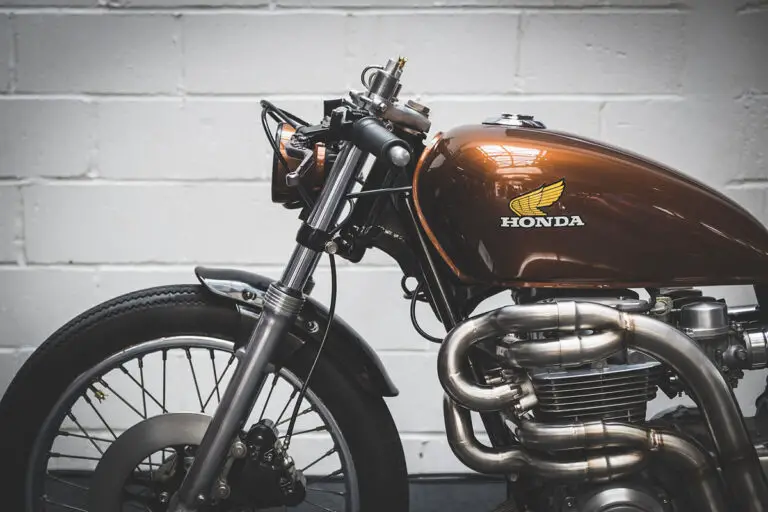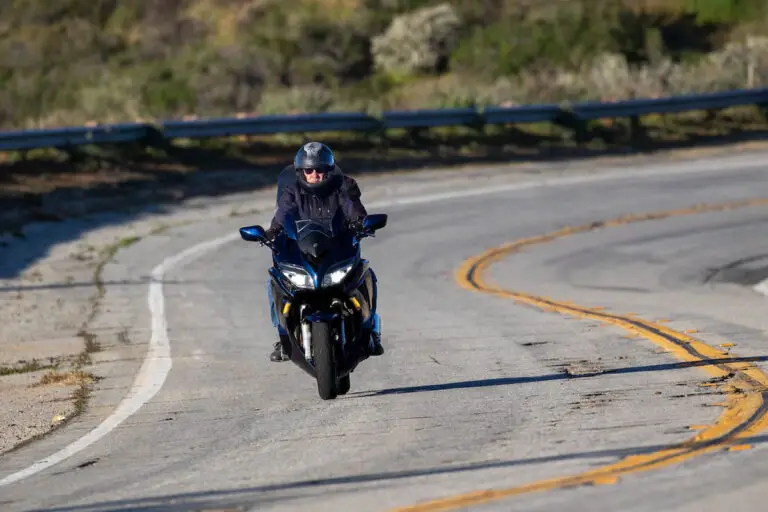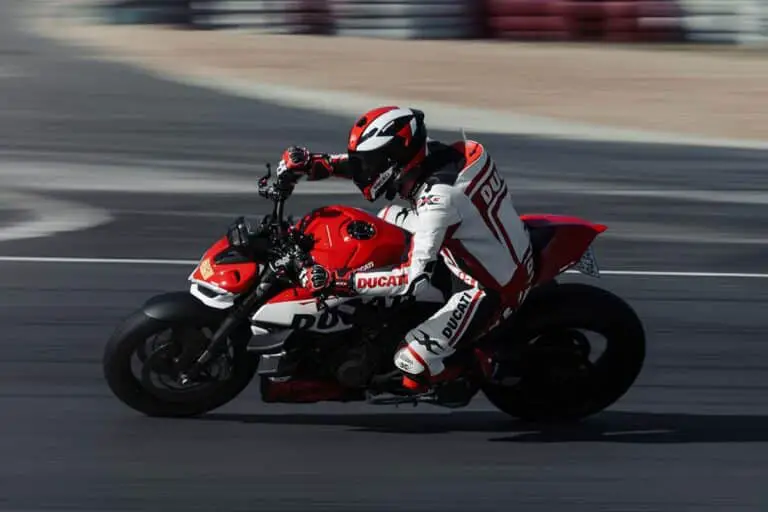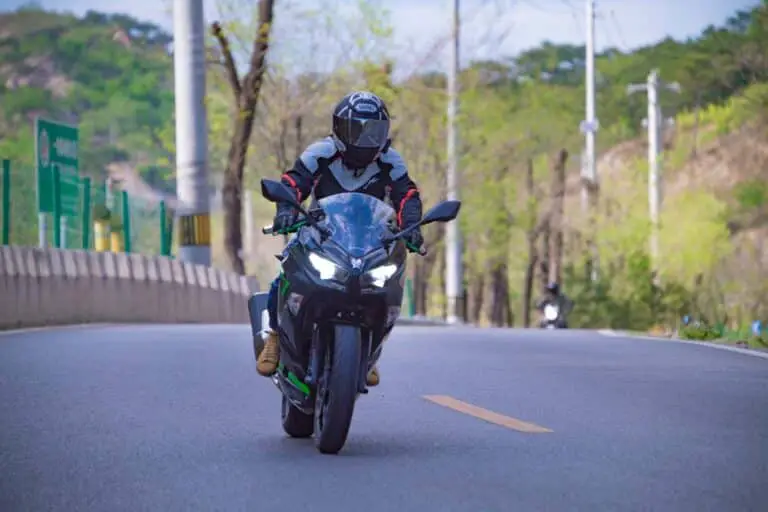How to Get On & Off a Motorcycle Properly
Disclosure: We may get commissions for purchases made through links in this post.
When we think of riding competencies, adeptness for cornering, braking, countersteering, throttle control, and obstacle avoidance are a few of what generally come to mind. However, improving on-road performance and rider safety are not limited to these abilities. Especially for beginner riders, knowing how to safely get on and off a motorcycle before acquiring all these other skills is crucial.
Getting on and off a motorcycle entails easy-to-follow steps, some pointers, and a few advanced maneuvers to get done. All existing processes are relatively similar — except for slight variances in bike familiarity, rider/passenger confidence, and execution.
This article teaches you to work smarter and be energy-efficient when mounting or dismounting your thumper. Additionally, you will get acquainted with pointers that not only reduce the propensity of dropping your bike to the ground but also help prolong your endurance during touring or adventure riding.
It is never a bad thing to brush up on basic riding skills (especially true for in-training aggro-riders and enthusiasts). So let’s delve into how to properly get on (and off) a motorcycle!
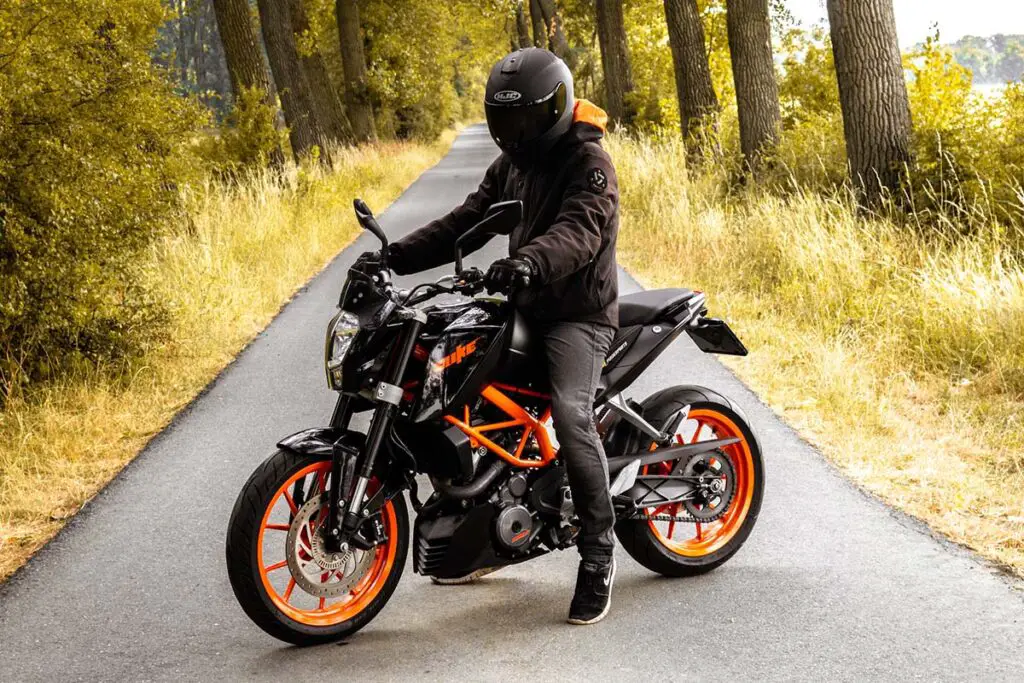
How to Get on a Motorcycle
The steps to mount and dismount a motorcycle are (for the most part) one and the same, with the dismounting procedure done inversely.
If we were to enumerate the steps on how to get on and off a motorcycle and interpret them at face value, they would look something like the lists below:
Mounting a Motorcycle
- Wear full protective gear to avoid injuries. These include:
- DOT/ECE-approved helmet
- Abrasion-resistant, all-weather jacket motorcycle jacket
- Riding pants
- Motorcycle boots like Alpinestars Toucan Gore-Tex Men’s Weatherproof Motorcycle Touring Boots (view on Amazon)
- Full-fingered gloves
- Baclava mask (when riding in cold weather)
- Weatherproof suit or rain gear (optional)
- Point the handlebars either toward or away from where the kickstand is.
- Hold the front brake lever to stabilize the bike.
- Place your wheeler in an upright position, and swing your leg over it.
- Straighten the handlebars.
- Fold in the kickstand, and get ready to go.
Dismounting a Motorcycle
- Squeeze the front brake lever to slow down and eventually stabilize the bike.
- Look down to the left and put the kickstand down, ensuring it is secure.
- Turn the handlebars toward the opposite direction of the kickstand.
- With your hand still pressing the brake lever, raise your right leg and swing it over.
- Release the front brake.
- Ensure the motorcycle is secure — propped on either its kickstand or a pair of paddock stands like Venom Motorcycle Front Triple Tree & Rear Swingarm Spool Lift Combo Wheel Lift Stands + Paddock Attachments (view on Amazon) — before leaving it in the garage.
Ideally, a single approach to getting on board and off a two-wheeler (like the ones above) would have been sufficient — if riders stuck to the motorcycle category that matched their build. However, this is far from reality, as you will find many superbly-skilled 5’4″ riders thrashing 500-pound adventure bikes.
This mismatched pairing of rider and motorcycle has led to innovative ways of mounting and dismounting a bike, as you will learn more of in the succeeding sections.
Getting on a Motorcycle as a Petite Rider
One of the ways that smaller-built motorheads can save energy (especially when adventure riding) is by employing various mounting and dismounting techniques.
You may choose to stick with just one. However, a good working knowledge of getting on a motorcycle can significantly improve your riding endurance. And we know all too well how important endurance is when navigating difficult terrain and riding conditions.
Three approaches work best in adverse riding situations (and even in urban driving), according to MotoTrek UK — the standard, handlebar, cowboy, and rolling mounting/dismounting techniques.
Standard Approach
This technique is the most common of the lot and typically involves twisting the handlebars (view on Amazon) in the direction where the kickstand or side stand is. However, a more effective way to go about this method is to point the front wheel away from the kickstand, creating more space for you and making mounting the motorcycle easier.
Once ready to mount your thumper from the left side, bring the bike closer to you, grab on the front brake, and swing your leg over the two-wheeler.
But if you are doing it from the right (the side where the kickstand is not positioned), the handlebars would have to be pointed toward the direction of the kickstand so that the motorcycle does not fall over. Other than this small detail, everything else is the same.
Handlebar Approach
From a standard mount, you can go about dismounting your bike in two ways — either exit on the same side where you mounted or on the opposite side.
If dismounting the motorcycle from the right, you need to push the bike back into the kickstand by grabbing the brush guards or pressing on the motorcycle. Doing either ensures the motorbike does not go anywhere.
Conversely, dismounting on the left is the same as mounting the motorcycle from that side but in reverse.
Cowboy Approach
This 3rd technique allows for mounting closer to the bike while putting you higher on it and reducing leg swing in the process. Moreover, this method makes it easier to straddle over luggage or get on a motorcycle with a top box (view on Amazon) or panniers (especially useful when touring or adventure riding).
To mount, grab both handlebars, put your leg or right foot on the same-side peg, engage the front brake, and swing your free leg over the motorcycle until it is planted on the other footpeg.
In some cases, you may need to do this technique on a heavy, leaned-over bike. If so, you need only use your body as leverage (grabbing the handlebars would not be enough at this point) to get the motorcycle upright.
Once your two-wheeler is balanced, do the same steps I just described, and you should be able to mount your motorbike’ equestrian style’ from either the left or right side.
Rolling Approach
Smaller-built riders can all agree that sometimes the bike is just too leaned into one side, making it difficult to mount it doing the first three techniques I discussed earlier.
In situations like this, the rolling technique would be most suitable. This maneuver requires mastery to pull off. But it is worth it since it requires the least amount of leverage from the rider.
To do this, prop your motorcycle upright and fold in the kickstand. The next part is where things get a little challenging, as you need to find both the bike’s and your balance.
Balance the Bike
If you are starting to learn this technique, you may need to travel around your thumper to feel its ‘soft spot’ or the stance that warrants the least amount of effort from you. Once you have ascertained this, use your hip to balance the bike while letting it lean on you slightly.
Swing Leg Over
Next, do the same starting position with your leg as you would in the cowboy technique. Then, look toward the direction you are heading, engage the clutch in 1st gear, start the engine, and swing your leg over the motorcycle as its wheels start to roll.
With this method, make sure to use delicate and deliberate inputs on both the clutch and the throttle. Your goal is to put the bike in motion slowly so you can safely straddle over it.
During practice, be bull-headed and commit to pulling your free leg off the ground and over the motorcycle. Otherwise, you will end up losing your balance if you let that leg drag behind.
Unfortunately, there is no shortcut to learning this last skill or any of the other techniques mentioned in this section. After all, they are maneuvers that professional riders and coaches employ when riding their own two-wheelers.
However, do not be disheartened. All you have to do is put in the time and equip your thumper with a good skid plate and sturdy brush guards — as you will inevitably drop it to the ground a few times. Without you realizing it, your hard work will soon pay off handsomely.
(Note: Seldom do motorheads mount or dismount their motorcycles from the right side. But when you find yourself stranded or pulled over on the highway, it pays to be able to execute this since your left side is usually the side where traffic is (which means your right is the safe zone). Similarly, mounting from the right side works better for motorheads carrying a lot of cargo.)
Boarding a Motorcycle as a Passenger
If you are new to riding, you may be wondering how to get on a motorcycle as a passenger and whether or not it is difficult. To be honest, the answer to this question is pretty much on a spectrum.
If you are riding a two-up Enduro sans the rear carrier and saddlebags (view on Amazon), the way you would mount that bike is pretty similar to how a solo rider would do it (but with extra care so as not hit the driver or the exhaust with your leg).
The difference in approach takes place if you are figuring out how to get on a motorcycle as a passenger and if the former is a touring motorcycle. Once you figure it out, you will realize that the procedure is no different from getting on a motorcycle with a backrest.
First things first — riding on any motorcycle as a passenger is all about communication. You want to confirm that your driver is positioned steadily and not maneuvering the bike backward. Next, you also want to ensure that the passenger footpegs are put down and just waiting for you to board.
Left Side
Once you have these things out of the way, it is time to mount the passenger seat. But unlike all the techniques detailed in this guide, you can only get on the bike from the left side (never the right).
The reason for this restriction is that it may feel counter-intuitive for the driver (not to mention that approaching from the right side of the motorcycle may cause both of you to be thrown off balance).
This tiny detail would not necessarily affect motorcycle savants used to pillion riding. Nonetheless, you would be better off making things more convenient for you and the driver by boarding from the left side.
This method works perfectly if the motorcycle rear is packed with storage options. Furthermore, mounting from the left side while the driver is standing and stable eliminates the risk of tipping the whole motorcycle to your side and causing it to drop to the ground.
Dismounting
Dismounting entails the same steps as boarding the motorcycle but in reverse. In doing so, ensure that the driver is standing and stable since you will likely drop all your weight to one side when you alight.
You may grab onto the driver’s shoulder for stability when you dismount — although it would be better to revert to a rear storage box or a passenger grab handle for support.
Additional Pointers
1. Always wear protective gear, even when practicing the different mounting and dismounting techniques.
2. Multiple approaches to getting on and off a motorcycle are required — especially in hills, soft ground, and other uneven terrain that can make these processes trickier than usual.
3. Never park your bike in neutral to avoid unintentional drops when mounting. Instead, kill the engine when it is in gear. After which, let it roll forward while holding against the gear set before putting the kickstand down and getting off.
4. When parking on steep inclines (a typical scenario when off-roading), evaluate whether or not the lean angle is too much for your bike’s kickstand to handle. If yes, reposition your thumper on a flatter surface. Otherwise, push the bike over, and get it leaned in as much as possible before alighting.
5. For pillion riding, remember that the added weight of a top box or panniers can affect the handling and balance of your motorcycle. So if you are accustomed to solo riding and have recently upgraded to a two-up layout, practice riding with these accessories affixed to your bike first and get used to the additional weight before taking on passengers.
Conclusion — Steps on How to Get On & Off a Motorcycle Properly
In summary, here are the key points on how to get on a motorcycle:
- Wearing proper protective gear
- Pointing handlebars towards/away from the kickstand
- Engaging the clutch in 1st gear before riding
- Stabilizing the bike via the front brake lever and kickstand before getting on or off
I have shared four techniques on how to best mount and dismount a motorcycle in today’s article. But in truth, there are probably more innovative ways out there to get on and off these two-wheeled machines.
Whichever approach you choose, the important thing is to ensure that you do not exert too much effort doing so. Instead, you should expend that energy into enjoying the actual ride.


